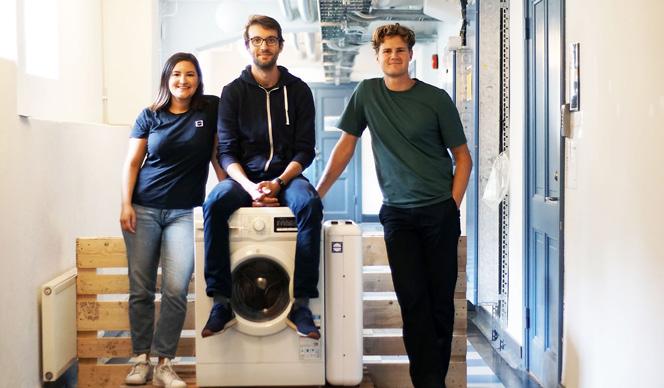
3 minute read
Road to 2045
Green Tech Through Improvement As Well As Innovation By Jakob Lagercrantz T here have been many attempts over the years to establish a Swedish green tech export. Green tech is an area which offers hope and inspires technological development. It is also growing. According to the Cleantech Global 100 Report 2020, investments in their selected 100 top companies reach 3 billion dollars annually. Bloomberg News reports an astounding 330 billion dollars invested in clean energy globally in 2018, with 80 percent allocated to sun and wind. There are large gains to be made; moving towards a circular economy in the EU would save up to 380 billion dollars. Yearly. This makes sense, because emissions and waste are lost resources. The more we recycle the more we save.
Sweden has, in reality, moved one step further than a focus on green tech. Rather than concentrating only on new innovative companies, we should look at how green solutions are implemented

in traditional industries. Why not recognize Scania’s or Volvo’s export of state-of-the-art buses as green tech, or the super-efficient ball bearings from SKF? Not to mention developments in the pulp and paper industry where energy efficiency is finally gaining ground, and also pulp mills which are now producing fuels for the transportation sector from former waste streams.
Volvo is still well known and respected in California, as is was the only car company that met the environmental challenges set up by the California Air Resources Board (CARB) in the 1970’s. Volvo developed the catalytic converter, thereby introducing a way to decrease nitrogen oxides and other harmful pollutants from vehicles. This was helpful in limiting smog – recalling that, at the time, Los Angeles was the most polluted city in the US. CARB was counting on companies to rise to the challenge, and Volvo came up with a technological solution. It took more than ten years before Volvo introduced the same catalytic converters in cars in Sweden.
So, was Volvo a green tech company, or “just” a car company using innovation to win market shares? The key is

continual improvement. In 1970 the total Swedish energy demand was 375 TWh, including industry, cars, housing, etc. In 2018, with almost twice the population and number of cars, and with a huge increase in the number of electric appliances, the demand was 373 TWh. Where one would expect increased energy use, we have in fact had a small decrease. This was achieved in small steps through diligent work by committed companies.
If, back in 1970, we had set up a target to decrease energy use, we would today be even further along than the Swedish 2045 target of netzero CO 2 emissions. All done through smart thinking, whether or not we call it green tech.
The Swedish 2030-secretariat was formed to support the decarbonization of the transport sector in Sweden. The secretariat is independent from political parties and technical solutions.
Top left: © Swedish Algae Factory; Middle: Solvatten is water treatment and solar water heating in one. © Solvatten; Top right: Northvolt is Europe’s first homegrown gigafactory for lithium-ion batteries. © Northvolt; Bottom left: The Mimbox allows users to wash more sustainably. © Mimbly; Bottom right: Thin solar cells roll out from the printing press. © Epishine/Thor Balkhed













